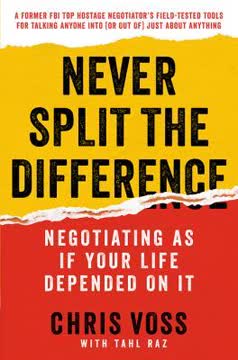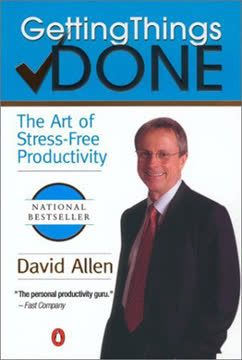Key Takeaways
1. Embrace Freedom Through Entrepreneurship
I own my life. I set the terms. I take responsibility for my results. I am the master of my fate, the determiner of my destiny. I live by design, not by default.
Reject the 9-to-5 Grind. The core message of "5 Day Weekend" is a rejection of the traditional work model. It's about escaping the constraints of a typical job, including commuting, time clocks, and bosses. Instead, the book advocates for entrepreneurship as a path to greater freedom and control over one's life. This involves a shift from seeking security to prioritizing independence.
Take Responsibility. The author emphasizes the importance of taking ownership of your life and results. This means setting your own terms, making your own decisions, and accepting responsibility for the outcomes. It's a proactive approach to life, where you are the architect of your own destiny rather than a passive participant. This mindset is crucial for success in entrepreneurship, where resilience and self-reliance are essential.
Design Your Life. The book encourages readers to live by design, not by default. This involves consciously creating a lifestyle that aligns with your values and goals, rather than simply accepting the status quo. It's about making deliberate choices about how you spend your time, who you surround yourself with, and what you pursue. This intentionality is the foundation for building a fulfilling and meaningful life.
2. Passive Income: The Key to a 5-Day Weekend
You’ll never get rich by saving money. You’ll only become rich by investing in assets that create cash flow and economic freedom.
Beyond Active Income. The book distinguishes between active and passive income, highlighting the limitations of relying solely on a job or hourly wage. Active income requires constant effort and time, while passive income generates revenue with minimal ongoing involvement. The goal is to create multiple streams of passive income that can sustain your desired lifestyle.
Passive Income Opportunities. The author emphasizes that passive income opportunities are more diverse and accessible than ever before, especially in the Information Age. These opportunities range from royalties and overrides to property rentals and owning a business managed by someone else. The key is to identify and develop income streams that require minimal time and effort to maintain.
Control Your Destiny. The ultimate aim of building passive income is to gain control over your time and financial destiny. This means setting your own schedule, making your own decisions, and answering only to yourself. It's about creating a life where your investments work for you, allowing you to pursue your passions and live life on your own terms.
3. Master Your Finances: Keep, Make, and Grow Money
The 5 Day Weekend plan shifts your income sources from active to passive.
Sequential Financial Steps. The book outlines a clear, sequential process for achieving financial freedom. This process involves three key steps: keeping more money, making more money, and growing more money. Each step builds upon the previous one, creating a solid foundation for long-term financial success.
Foundation First. The initial focus is on maximizing the efficiency of your existing resources. This involves identifying and reclaiming dollars that are currently being lost to inefficiencies, such as overpaying on taxes or hidden investment fees. By plugging these financial leaks, you can free up capital for investing.
Active to Passive. The ultimate goal is to shift your income sources from active to passive. This involves building a base of assets that generate consistent cash flow with minimal ongoing effort. By following this process, you can create a sustainable and scalable path to financial independence.
4. Crush Debt and Plug Financial Leaks
Sometimes the only way to get out of a hole is to stop digging.
Debt Reduction Strategy. The book provides a four-step strategy for paying down debt, emphasizing the importance of building savings first, restructuring loans, attacking one loan at a time, and being cautious about locking money in an asset. The Cash Flow Index is introduced as a tool for prioritizing loan payoffs based on efficiency.
Identify Root Causes. Beyond technical strategies, the book stresses the importance of addressing the underlying psychological reasons for getting into debt. This involves self-reflection and a fundamental shift in consciousness regarding debt, focusing on productive assets rather than consumerism.
Maximize Efficiency. The book emphasizes the importance of maximizing the efficiency of your existing resources by plugging cash flow leaks. This includes boosting your credit score, restructuring loans, optimizing insurance, incorporating for tax advantages, and analyzing investments for hidden fees. By plugging these leaks, you can free up substantial amounts of monthly cash flow without reducing your spending.
5. Entrepreneurial Income: Start Small, Learn Fast
Start your first business this way: Begin with the smallest possible project in which someone will pay you money to solve a problem they know they have.
Side Hustle Mindset. The book encourages readers to start entrepreneurial ventures on the side, without jeopardizing their current financial stability. This allows for experimentation and learning with minimal risk. The key is to start small, experiment, and learn from both successes and failures.
Minimum Viable Product. The book advocates for thinking in terms of a minimum viable product, focusing on taking ideas to market with very little capital expenditure. This involves testing market viability before fully committing to a project or opportunity.
Continuous Improvement. The book emphasizes the importance of continuous improvement, encouraging readers to increase their income by at least 3 percent each month. This steady and sustained effort, combined with a willingness to learn and adapt, is crucial for long-term success.
6. Shift from Active to Passive Income Streams
The key to achieving your freedom lifestyle is transforming your income from active to passive.
Active/Passive Income Scale. The book introduces an Active/Passive Income Scale, illustrating various types of work according to their degree of activity or passivity. This helps readers understand the different ways income can be earned and identify opportunities for shifting towards more passive sources.
Passive Income Ratio (PIR). The book introduces the concept of a Passive Income Ratio (PIR), referring to the amount of passive income generated in relation to expenses. The goal is to achieve a 1:1 PIR, where passive income covers monthly expenses, and ultimately a 2:1 ratio or higher for financial independence.
Avoid the Active Income Trap. The book cautions against using active income to fund lifestyle upgrades or speculative investments. Instead, it emphasizes the importance of using active income to build a solid foundation of assets that generate passive income.
7. Cultivate a Freedom Mindset
In the conventional mindset, security, not freedom, is the overriding goal. The irony is that the security for which we sacrifice our freedom doesn’t even exist.
Freedom vs. Security. The book challenges the conventional mindset that prioritizes security over freedom. It argues that the security for which we sacrifice our freedom is often illusory, and that true security comes from taking control of our own destiny.
Job Security is a Myth. The book emphasizes that job security is a myth, and that the only real security comes from developing independence through initiative, innovation, and tenacity. This involves embracing a new mindset that values freedom over security.
Embrace Change. The book encourages readers to adapt and thrive in a rapidly changing environment. This involves expanding mental capacity, participating in their own financial rescue, and acting on knowledge rather than simply acquiring it.
8. Build a Supportive Inner Circle
You are only one relationship or one idea away from your next level of prosperity.
The Power of Association. The book emphasizes the importance of building a strong inner circle of supportive and like-minded individuals. This inner circle should consist of people who push you beyond your limits, hold you accountable, and are strivers and achievers themselves.
Cut Ties with Toxic People. The book advises readers to immediately cut ties with toxic people who are constantly negative and skeptical. These individuals can drag you down and hinder your progress towards your goals.
Formalize Support. The book suggests creating a formal mastermind group and seeking out mentors who can provide guidance and support. This structured approach to building relationships can significantly accelerate your progress.
9. Live a Purpose-Driven Life
Rebels are the people who refuse the seen for the unseen.
Beyond Materialism. The book challenges the materialistic definition of the American Dream, arguing that true fulfillment comes from living a life of purpose and significance. This involves pursuing adventure, creating unforgettable memories, and sharing abundance with your community.
Unleash Your Greatness. The book emphasizes that a clear purpose unleashes your greatness and enables you to escape aimlessness, boredom, and mediocrity. This involves developing your gifts and talents and leveraging them to create value for others and fulfillment for yourself.
Create, Don't Find. The book encourages readers to create their own purpose rather than searching for it. This involves identifying what makes you come alive and pursuing it with passion and dedication.
10. Reject Perfection, Embrace Action
The smallest of actions is always better than the noblest of intentions.
Done is Better Than Perfect. The book challenges the pursuit of perfection, arguing that it can be a major barrier to productivity. Instead, it encourages readers to embrace action and ship products out the door, even if they are not perfect.
Learn from Failure. The book emphasizes that failure is a necessary part of the entrepreneurial journey. It encourages readers to fail quickly and often, learning from their mistakes and using them as catalysts for success.
Continuous Improvement. The book advocates for continuous improvement, encouraging readers to constantly refine their processes and systems based on market feedback. This iterative approach allows for adaptation and growth over time.
Last updated:
Review Summary
5 Day Weekend receives mixed reviews, with an overall rating of 3.96/5. Many readers find it insightful and inspiring, praising its practical strategies for financial independence and lifestyle improvement. Some consider it life-changing, appreciating its focus on passive income and purposeful living. However, critics argue it's US-centric, derivative of other financial books, and occasionally too dense or unrealistic. The book's approach to debt management, investing, and entrepreneurship is generally well-received, though some readers find certain sections less applicable or overly complex.
Similar Books










Download PDF
Download EPUB
.epub digital book format is ideal for reading ebooks on phones, tablets, and e-readers.




